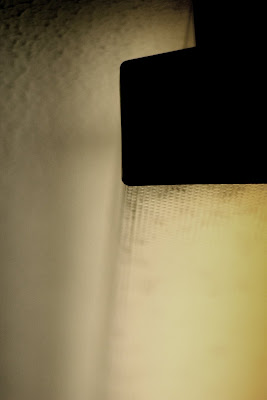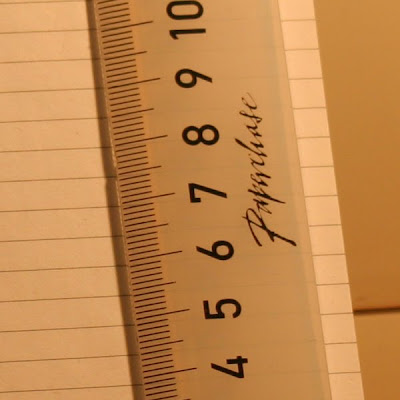Being a student, the 7D – which seemed at the time of consideration designed specifically for me; reportedly great high-ISO performance, 8fps and 60fps movie mode (which, unlike many, I would have used – I bought a Kodak ZI6 specifically for this purpose...) – priced at £1699 at launch, looked as if it would be many years before it came down to a price I could afford. Thus, other considerations fell onto my lap – namely, a refurbished 40D or the new 500D/T1i.
After much debate, reading reviews and trying to figure out the cost after selling my videocamera and 20D, I bought a Canon-refurbished model off eBay for £399.95. Along with this, I bought an Opteka battery grip to give a bit more ‘bulk’ to the camera.
Body & Handling:
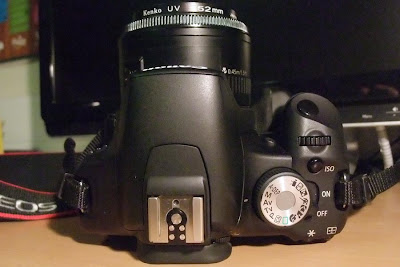


The camera arrived the day before the grip; initially I was shocked at how small the body was... this was one of my major concerns when I bought it; after being used to my hefty 20D and going down to the rebel series, in many ways it did seem to be a significant downgrade. It wasn’t until I spent an hour or so getting used to it that I became accustomed to the feel of the much smaller grip, different button layout and fantastic screen compared to my 1.8” 20D, however I’m still not as proficient with changing settings, handling and using the camera.
One of the biggest things I miss is the top-plate LCD; numerous times I’ve glanced down and been staring at nothing but a control wheel and on/off switch.
However, there are a surprising number of settings with hard-buttons [or at least, ‘shared’ hard buttons] and the menu system really is optimised for ease of use... At first, I felt a little patronised, with some of the settings I use a lot being under the lengthy custom function menu, though there is a customisable menu to which you can add even the most subordinate custom functions to, and change with one button and the control dial – in a similar way to on my 20D. Ultimately, I think I can get used to this...
The SD slot cover is also surprisingly sturdy... (and transfer speeds are very quick!)
Live-view:
Live-view is something that’s always intrigued me; I began serious photography with a non-SLR Kodak Prosumer [DX6490 if I recall correctly] so have had experience with electronic viewfinders and LCD screens, and after having a true optical viewfinder wondered why anyone would ever use such a feature... however, I’ve found myself using it quite frequently. The resolution and noise test shots were actually composed using it; you can zoom in up to 10X to check focus, which is just brilliant....
The first instance where I used Live-view was extremely frustrating, however... After finally beginning to warm to the interface, and learning the new controls, it came as a shock that when in Live-view mode, the hard buttons of the directional pad no longer relate to their standard functions; they instead change the point of focus. To change these settings, you must press set, and then use the control wheel to adjust them through a menu based system.
This hasn’t proven any problem for me, and shouldn’t do for anyone else, as in a time when using Live-view, most likely with a tripod for critical compositions or macro work, you have the time to do this.
Video:
Although I didn’t have time to prepare a sample video, many can be found on Vimeo and other such sites. The HD1080p mode at 20fps is pretty much useless; no one is realistically going to use this except in certain circumstances where the composition is static. However, the HD720p at 30fps is more than just usable; image quality is fantastic, far surpassing my old Kodak ZI6 HD videocamera.
The ability to use good quality lenses is a definite factor in the superb image quality, which can provide very crisp images with great DOF effects...
However, there are no manual settings in video mode; something Canon really should resolve with a firmware update as it is painfully frustrating. Saying that, you can control expose compensation, which for my purposes is good enough, but not perfect.
Furthermore, you have to twist the control dial all the way around past the auto-settings to use the video mode; ridiculous. Granted, many who will use this will maybe stick to the preset modes, however for myself, between the basic and creative zones would have been a much more logical place to put it.
Interface:
The screen of this camera is truly beautiful; I’ve never seen anything like it. It’s crisp and vivid, with fantastic performance under harsh light, making viewing images or seeing settings a breeze.
The menu systems seem to have taken a leaf out of Nikon’s book, and now consist of much shorter menus, with long subordinate lists... It works well, not that I use them a lot.
One of the biggest things for me – other than the aforementioned customisable menu (which by the way, remembers its position even when the camera has been turned off) is the delete function. On my old 20D, if I had a number of images to delete; say I’d been out shooting and was on the way home, reviewing and deleting images had to be through either each individual image being deleted separately, or protecting those I didn't want to delete and deleting the rest, then un-protecting the ones I wanted, again individually.
The 500D lets you go through, checking boxes on individual images and then deleting them as a whole, leaving all of the ones you didn’t check there. You can also format, delete all, and delete singularly, and protect images, though I’ve had no need to do this yet so am not sure how this function works.
General Image Quality:
The image quality at first seemed brilliant at low ISO’s, yet when going past ISO1600, became very ‘muddy’. However, a few tweaks with the parameters and noise reduction settings, and the results are simply stunning.
Resolution is a major step up for me from 8mp, as is High ISO performance. Optimum ISO with my 20D was 200, and the highest usable ISO was 800 – sometimes 400 depending on the situation. However, on this I can quite happily shoot at 1600 and have images practically identical as ISO 100.
To put it in perspective, I did a shoot for my Student Union Executive Team, with some of the images going on the front page of the annual news letter; I had to work with what I had, and felt embarrassed about the final results – some of the images were shot at ISO400, and looked hideous to my eyes. Granted, the Union were very happy, but I could tell that it was the limitations of my equipment that restricted me in that situation, though I’d be quite happy doing the same shoot again at 1600 with my new 500D.
ISO12800 on the new 500D is as good, if not better, than ISO3200 on my old 20D.
ISO Samples:
Canon 500D/T1i, 50mm f1.8 @ f8.0, ISO100

Canon 500D/T1i, 50mm f1.8 @ f8.0, ISO200

Canon 500D/T1i, 50mm f1.8 @ f8.0, ISO400

Canon 500D/T1i, 50mm f1.8 @ f8.0, ISO800

Canon 500D/T1i, 50mm f1.8 @ f8.0, ISO1600

Canon 500D/T1i, 50mm f1.8 @ f8.0, ISO3200
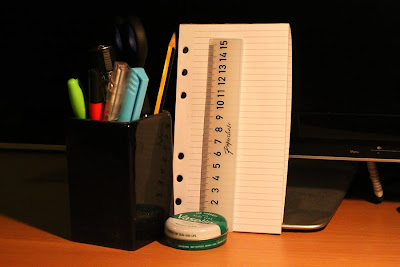
Canon 500D/T1i, 50mm f1.8 @ f8.0, ISO6400

Canon 500D/T1i, 50mm f1.8 @ f8.0, ISO12800

100% Crops:
Canon 500D/T1i, 50mm f1.8 @ f8.0, ISO100

Canon 500D/T1i, 50mm f1.8 @ f8.0, ISO200

Canon 500D/T1i, 50mm f1.8 @ f8.0, ISO400

Canon 500D/T1i, 50mm f1.8 @ f8.0, ISO800

Canon 500D/T1i, 50mm f1.8 @ f8.0, ISO1600
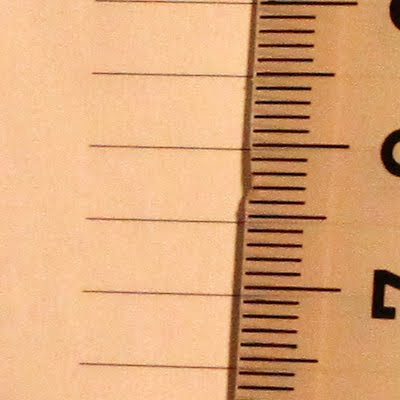
Canon 500D/T1i, 50mm f1.8 @ f8.0, ISO3200

Canon 500D/T1i, 50mm f1.8 @ f8.0, ISO6400

Canon 500D/T1i, 50mm f1.8 @ f8.0, ISO12800

Conclusion:
Short, sweet and to the point – very much like the camera – it’s a fantastic piece of kit capable of outstanding results; being only a student I was a little intimidated by giving up my 20D colossus and going for a rebel, as although it’s the images that matter, there’s always a slight undertone of ‘oh he has a big camera, he must be good, forget he’s only young’ – I now have no worries; I know I can get stunning images – more so than my 20D – which will speak for themselves.
If you want an SLR, either as a beginner, amateur or someone who makes a bit of money on the side from photography, you really can’t go wrong with this. It has its quirks, but the image quality more than makes up for it!
General Samples:
These are some images of my first day with the 500D; I wasn’t used to it yet and didn’t have the battery grip attached, so some suffer from camera shake even at ISO3200 – though to be fair it was pitch black once I’d charged it up!
Canon 500D/T1i, Canon 50mm f1.8 @ f2.8, 1/60 sec, ISO3200

Canon 500D/T1i, Canon 50mm f1.8 @ f2.8, 1/40 sec, ISO400

Canon 500D/T1i, Canon 50mm f1.8 @ f2.8, 1/500 sec, ISO400

Canon 500D/T1i, Canon 50mm f1.8 @ f4.0, 1/400 sec, ISO400
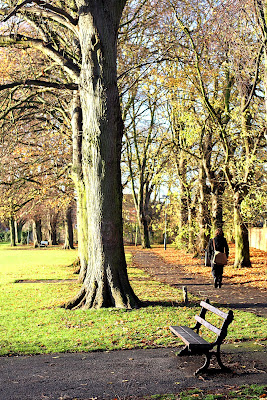
Canon 500D/T1i, Canon 50mm f1.8 @ f1.8, 1/200 sec, ISO12800

Canon 500D/T1i, Sigma 18-50mm @ 50mm/f2.8 @ f2.8, 1/60 sec, ISO3200






